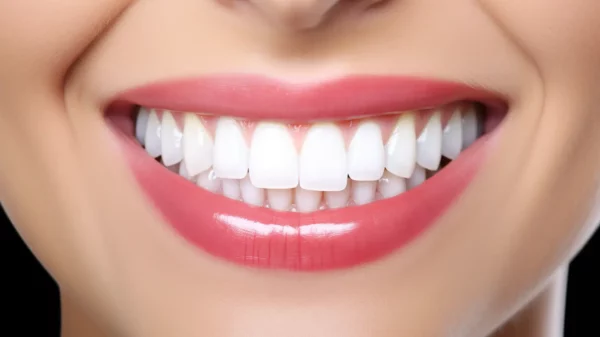Maintaining proper dental hygiene is essential for a healthy smile and overall well-being. Brushing your teeth twice a day is a well-known practice, but what about flossing? Flossing plays a crucial role in removing plaque and debris from the areas between our teeth and along the gumline, where toothbrushes can’t reach. However, just like with any good habit, it’s important to strike a balance. In this blog post, we will explore the intriguing question: Can you floss too much?
Understanding the Importance of Dental Hygiene
Before we dive into the specifics of flossing, it is crucial to understand the significance of maintaining good dental hygiene. Our oral health is closely linked to our overall well-being and can impact various aspects of our lives, including our confidence, ability to eat comfortably, and even our systemic health.
Proper dental hygiene involves a combination of regular brushing, flossing, and routine dental check-ups. While brushing helps remove plaque and bacteria from the surfaces of our teeth, flossing plays a vital role in accessing the areas that a toothbrush cannot reach. These include the tight spaces between our teeth and the gumline, where bacteria can accumulate and lead to dental problems if left untreated.
When we neglect to floss regularly, plaque buildup can occur, which eventually hardens into tartar. Tartar is a stubborn substance that cannot be removed by brushing or flossing alone and requires professional intervention. If tartar is not removed, it can contribute to gum disease, tooth decay, and other oral health issues.
Flossing acts as a preventive measure, helping to remove plaque and food particles before they can cause harm. By incorporating flossing into our daily oral hygiene routine, we can significantly reduce the risk of developing oral health problems and maintain a healthy smile.
It is important to note that flossing is not a substitute for brushing but rather an essential complement to it. Both practices work hand in hand to ensure that our teeth and gums stay clean and healthy. Therefore, to achieve optimal oral hygiene, it is crucial to embrace both brushing and flossing as integral parts of our daily routine.
Can You Floss Too Much?
Flossing is an essential component of a well-rounded oral hygiene routine, but is there a possibility of flossing too much? While it may seem counterintuitive, excessive flossing can indeed have negative consequences on our oral health.
Dental professionals typically recommend flossing at least once a day to effectively remove plaque and debris from between our teeth. However, some individuals may take their commitment to oral hygiene to the extreme, flossing multiple times throughout the day or vigorously flossing their gums. This excessive behavior can lead to potential risks and harm to our oral health.
One of the risks associated with over-flossing is gum tissue irritation. Flossing too frequently or aggressively can cause the gums to become red, swollen, and tender. The repeated trauma caused by excessive flossing can lead to gum recession, where the gum tissue pulls away from the teeth, exposing the sensitive tooth roots and potentially leading to tooth sensitivity.
Moreover, over-flossing can also disrupt the natural balance of bacteria in our mouths. Our mouths are home to both beneficial and harmful bacteria. While flossing is essential for removing plaque, excessive flossing can disrupt the delicate ecosystem of oral bacteria. This imbalance can potentially lead to an overgrowth of harmful bacteria, increasing the risk of gum disease and other oral health problems.
Additionally, over-flossing can cause micro-tears in the gum tissue, making it more susceptible to infection. When we floss with excessive force, we can inadvertently create small cuts or abrasions on our gums. These openings provide an entry point for bacteria, increasing the likelihood of gum infections.
It is important to remember that moderation is key when it comes to flossing. Following the recommended guidelines by dental professionals and flossing once a day is typically sufficient for maintaining good oral health. However, if you have concerns or specific dental conditions, it is always best to consult with your dentist or dental hygienist for personalized advice.
By understanding the risks associated with excessive flossing, we can strike a balance between maintaining good oral hygiene and avoiding potential harm. In the next section, we will explore the signs and symptoms that may indicate over-flossing, helping you assess if your flossing routine needs adjustment.
Signs and Symptoms of Over-Flossing
While flossing is an essential part of maintaining good oral hygiene, it is important to be aware of the signs and symptoms that may indicate over-flossing. Recognizing these indicators can help us identify if our flossing routine needs adjustment and if we may be at risk of causing harm to our oral health.
One common sign of over-flossing is gum recession. When gums recede, they pull away from the teeth, exposing the roots. This can occur due to excessive force applied during flossing, causing the gum tissue to become damaged and recede over time. If you notice that your gums are receding or if you experience tooth sensitivity, it may be an indication that you are flossing too aggressively or too frequently.
Bleeding gums during or after flossing can also be a sign of over-flossing. While some mild bleeding may occur when you first start flossing or if you have recently increased the frequency, persistent or excessive bleeding should not be ignored. It may indicate that you are applying too much pressure or flossing too vigorously, leading to gum irritation and inflammation.
Another symptom to watch out for is gum inflammation. Over-flossing can cause the gum tissue to become red, swollen, and tender. If you notice these signs, it may be an indication that you need to reassess your flossing technique and frequency.
Tooth sensitivity is another potential consequence of over-flossing. When gums recede due to excessive flossing, the roots of the teeth become exposed. These roots are more sensitive than the enamel-covered crowns, leading to heightened sensitivity to hot, cold, sweet, or acidic foods and drinks. If you experience tooth sensitivity that is not related to any other underlying dental issues, it may be a result of over-flossing.
If you are experiencing any of these signs or symptoms, it is important to take a step back and evaluate your flossing routine. Consider adjusting the frequency of your flossing or the technique you are using. If the symptoms persist or worsen, it is recommended to seek advice from a dental professional who can assess your oral health and provide personalized guidance.
In the next section, we will delve into the world of flossing products and explore the best options available to ensure effective oral hygiene.
Best Flossing Products for Effective Oral Hygiene
Having established the importance of finding a balance in flossing frequency, let’s now explore the various flossing products available in the market. From traditional dental floss to innovative water flossers, there are several options to choose from. Each product comes with its own set of advantages and considerations, catering to different needs and preferences.
- Traditional Dental Floss: This classic flossing method consists of a thin strand of nylon or silk thread that is manually maneuvered between the teeth. Traditional dental floss is versatile and can reach tight spaces effectively. It is available in different forms, such as waxed or unwaxed, flavored or unflavored. This type of floss is an excellent option for those who prefer a more tactile and hands-on approach to flossing.
- Dental Tape: Dental tape is similar to traditional dental floss in terms of function but has a wider, flatter shape. The broader surface area of dental tape makes it ideal for individuals with wider spaces between their teeth or those who have dental work such as bridges or braces. Dental tape provides a wider coverage area and may be more comfortable for individuals with sensitive gums.
- Floss Picks: Floss picks, also known as floss sticks or flossers, are small plastic devices that hold a short piece of floss stretched between two prongs. Floss picks offer convenience and ease of use, making them a popular choice for those who struggle with traditional flossing techniques. They provide a handle for better grip and control, allowing for precise flossing in hard-to-reach areas. Floss picks are particularly useful for individuals with dexterity issues or for flossing on the go.
- Water Flossers: Water flossers, also called oral irrigators or dental water jets, use a pulsating stream of water to clean between the teeth and along the gumline. These devices can effectively remove plaque and debris, making them a great alternative for individuals who find traditional flossing challenging or uncomfortable. Water flossers are particularly beneficial for individuals with braces, implants, or other dental appliances.
When selecting a flossing product, it is essential to consider your specific needs and preferences. Some factors to consider include the spacing between your teeth, the condition of your gums, any dental work you may have, and your comfort level with different flossing techniques. Consulting with your dentist or dental hygienist can provide valuable guidance in choosing the most suitable flossing product for your unique oral health needs.
In the next section, we will provide recommendations for the best flossing products based on expert reviews and customer feedback. Stay tuned to discover the top choices that can enhance your oral hygiene routine.
Best Flossing Products Recommendations
Now that we have explored the different types of flossing products available, it’s time to dive into some specific recommendations for the best flossing products on the market. These recommendations are based on expert reviews, customer feedback, and the overall effectiveness of the products in promoting optimal oral hygiene. Remember, it’s important to choose a flossing product that suits your individual needs and preferences.
Reach Mint Waxed Dental Floss

If you’re looking for an effective dental floss that can remove plaque and food particles, Reach Mint Waxed Dental Floss is a good choice that is accepted by the American Dental Association.
Pros
- With 55 yards of Reach, a mint flavored, waxed dental floss, you get an extra-wide cleaning surface specifically designed for wide spaced teeth.
- Helps protect your teeth and gums by effectively removing plaque from hard to reach places that brushing alone may miss.
- Reach waxed dental floss removes small food particles that get stuck between the teeth and around gums, and that can lead to bad breath, for a thorough clean.
Cons
- The extra-wide cleaning surface may not be suitable for those with tightly spaced teeth.
- Some users may find the mint flavor too strong.
- The floss may shred or break if not used carefully.
With Reach Mint Waxed Dental Floss, you’ll get a thorough clean that removes plaque and food particles. The extra-wide cleaning surface is designed for wide spaced teeth, but may not be suitable for those with tightly spaced teeth. The mint flavor may be too strong for some users, but it helps freshen breath. Be sure to use the floss carefully to avoid shredding or breaking.
Oral-B EssentialFloss Cavity Defense Dental Floss

If you want a dental floss that helps remove plaque to reduce cavities, Oral-B EssentialFloss Cavity Defense Dental Floss is a good choice.
Pros
- The floss is shred-resistant, making it easier to use.
- It cleans where your brush can’t reach, so you can maintain good oral health.
- The wax coating makes it easier to slide between your teeth.
Cons
- Some users may find it too thin.
- The mint flavor may be too strong for some people.
- It may not be suitable for people with sensitive gums.
Oral-B EssentialFloss Cavity Defense Dental Floss is a reliable option for those who want to maintain good oral hygiene. The floss is shred-resistant, so you won’t have to worry about it breaking or getting stuck between your teeth. It also cleans where your brush can’t reach, so you can be sure that you’re removing plaque and particles between your teeth and just below the gum line. The wax coating makes it easier to slide between your teeth, so you won’t have to struggle to get the floss in place.
One potential drawback of this floss is that some users may find it too thin. While this makes it easier to use, some people may prefer a thicker floss. Additionally, the mint flavor may be too strong for some people, especially those who are sensitive to strong flavors. Finally, it may not be suitable for people with sensitive gums, as it can be abrasive.
Overall, if you’re looking for a dental floss that is shred-resistant, cleans where your brush can’t reach, and helps remove plaque to reduce cavities, Oral-B EssentialFloss Cavity Defense Dental Floss is a solid choice.
Reach Mint Waxed Dental Floss

If you’re looking for a dental floss that does the job, Johnson & Johnson Reach Mint Waxed Dental Floss is a good choice.
Pros
- With a refreshing minty taste, it leaves your mouth feeling clean and fresh.
- Removes up to 52% more plaque than non-waxed floss, making it more effective at cleaning between teeth.
- It slides easily and comes with an extra shred-resistant feature, making it durable and long-lasting.
Cons
- The package weight of the product is 5.6 ounces, which may be heavier than some other dental floss products.
- Some users may prefer a different flavor or scent.
- The product may be more expensive than some other dental floss brands.
We found that Johnson & Johnson Reach Mint Waxed Dental Floss is a reliable and effective dental floss that lives up to its claims. The minty flavor is refreshing and it slides easily between teeth, making it easy to use. The extra shred-resistant feature is also a plus, as it makes the floss more durable and long-lasting.
Overall, we recommend Johnson & Johnson Reach Mint Waxed Dental Floss for anyone looking for a high-quality dental floss that is effective at removing plaque and keeping your mouth feeling clean and fresh.
Oral-B Glide Pro-Health Dental Floss

If you’re looking for a dental floss that effectively removes tough plaque between teeth and just below the gum line, then Oral-B Glide Pro-Health Dental Floss is a great choice.
Pros
- The silky-smooth, shred-resistant texture slides up to 50% more easily in tight spaces vs. regular floss.
- The light coating of natural wax provides improved grip.
- This is the #1 Dentist Recommended Brand.
Cons
- Some people may find the mint flavor too strong.
- The floss may fray if used too aggressively.
- The floss may be too thick for some people’s teeth.
Oral-B Glide Pro-Health Comfort Plus Floss is extra soft and gentle on gums, yet tough on plaque. The silky-smooth, shred-resistant texture slides up to 50% more easily in tight spaces vs. regular floss. This dental floss is strong and shred-resistant with a light coating of natural wax for improved grip. It is 40 meters in length, so it will last you for a while.
One thing to note is that some people may find the mint flavor too strong. Additionally, the floss may fray if used too aggressively, so it’s important to be gentle when using it. Lastly, the floss may be too thick for some people’s teeth.
Overall, if you’re looking for a dental floss that is gentle on your gums, yet tough on plaque, then Oral-B Glide Pro-Health Dental Floss is definitely worth considering. It’s the #1 Dentist Recommended Brand and its silky-smooth, shred-resistant texture will make flossing a breeze.
Cocofloss Dental Floss

If you’re looking for a dental floss that’s effective and eco-friendly, Cocofloss is a great option.
Pros
- Woven with 500+ grime-grabbing fibers for effective plaque removal
- Infused with naturally cleansing coconut oil and aromatic fruit oils for a refreshing scent
- Refillable containers and Leaping Bunny certified cruelty-free
Cons
- May fray or get stuck in tight spaces
- Higher price point than some other brands
- Not suitable for those with sensitive gums
Cocofloss is a dentist-designed dental floss that features a unique textured weave to effectively remove plaque and debris from between teeth. It’s also infused with coconut oil and fruit oils for a refreshing scent and contains no toxins like parabens, sulfates, or PFAS.
While Cocofloss is eco-friendly with refillable containers and Leaping Bunny certified cruelty-free, it may not be suitable for those with sensitive gums or tight spaces between teeth. Additionally, it does come with a higher price point than some other dental floss brands.
Overall, if you’re looking for an effective and eco-friendly dental floss, Cocofloss is a great option to consider.
Remember, these are just a few of the many excellent flossing products available in the market. It is important to choose a product that suits your specific oral health needs and preferences. Whether you opt for traditional dental floss, dental tape, floss picks, or a water flosser, the key is to find a product that you feel comfortable using consistently.
In the next section, we will provide valuable tips and best practices for effective flossing techniques, ensuring that you get the most out of your chosen flossing product.
Best Practices for Flossing
Now that you have chosen the best flossing product for your needs, it’s essential to learn and implement proper flossing techniques to maximize its effectiveness. Here are some valuable tips and best practices to help you achieve optimal oral hygiene through flossing:
- Proper Technique: To ensure effective plaque removal, start by taking an 18-inch piece of dental floss (or the recommended length for your flossing product). Wind the majority of the floss around your middle fingers, leaving a small section to work with. Hold the floss between your thumb and index fingers, gently sliding it between your teeth using a back-and-forth motion. Curve the floss around each tooth in a C-shape, making sure to go beneath the gumline. Repeat this process for each tooth, using a clean section of floss for each space.
- Consistency is Key: Regular and consistent flossing is crucial for maintaining optimal oral health. Aim to floss at least once a day, preferably before bedtime, to remove plaque and debris that may have accumulated throughout the day. By making flossing a habit, you can significantly reduce the risk of developing dental issues such as gum disease and tooth decay.
- Gentle but Thorough: While it is important to be thorough in your flossing technique, it is equally important to be gentle. Avoid applying excessive force or snapping the floss against your gums, as this can cause irritation and potential damage. Instead, use a gentle up-and-down motion to clean the sides of each tooth and along the gumline. Take your time and be patient while flossing to ensure a thorough clean without harming your gums.
- Cover All Areas: As you floss, make sure to access all areas of your mouth, including the back teeth and hard-to-reach spaces. Pay attention to the sides of each tooth and gently glide the floss up and down, ensuring it reaches just beneath the gumline. By thoroughly flossing all areas, you can effectively remove plaque and food particles, reducing the risk of dental issues.
- Seek Professional Guidance: If you have specific concerns about your flossing technique or oral health, it is always beneficial to consult with your dentist or dental hygienist. They can provide personalized advice, tailored to your unique dental needs. They can also demonstrate proper flossing techniques and address any questions or concerns you may have.
By following these best practices, you can make the most of your flossing routine and maintain optimal oral hygiene. Remember, flossing is an integral part of your overall dental care routine, working alongside regular brushing and professional dental cleanings. Embrace the habit of consistent flossing, and your efforts will be rewarded with a healthier smile.
As we come to the end of this comprehensive blog post, we hope you have gained valuable insights into the question of whether you can floss too much and discovered the best flossing products to enhance your oral hygiene routine. Prioritize your dental health, strike a balance in your flossing routine, and enjoy the benefits of a beautiful and healthy smile.










